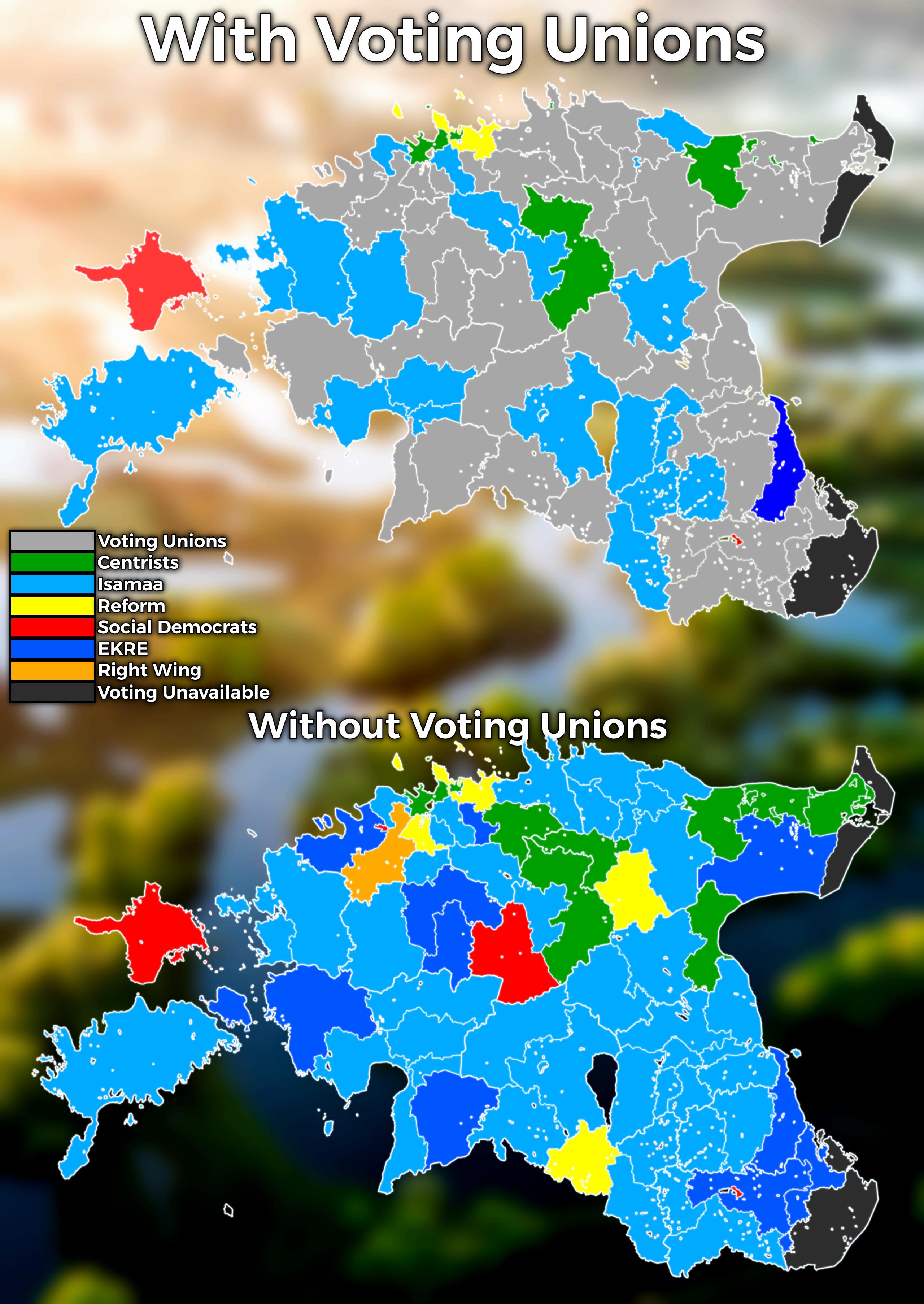Estonian 2025 Municipal Election Results Map


Marcus Rodriguez
Historical Geography Expert
Marcus Rodriguez specializes in historical cartography and geographic data analysis. With a background in both history and geography, he brings unique...
Geographic Analysis
What This Map Shows
The Estonian 2025 municipal election results map vividly illustrates the political landscape of Estonia by showcasing the most popular political party in each municipality. This visualization provides a snapshot of the electoral preferences of the Estonian population at the municipal level, highlighting their party affiliations in the recent elections. As the map unfolds, it reveals the political trends and inclinations of various regions, showcasing how these localities align with different parties within the Estonian political spectrum.
Deep Dive into Estonia's Political Landscape
Estonia, a small Baltic nation known for its digital innovation and rich cultural heritage, has a diverse political environment. The country's political scene is primarily dominated by several major parties, including the Estonian Reform Party, the Centre Party, and the Conservative People's Party of Estonia (EKRE). Each of these parties has its own distinct ideology and voter base, influencing local governance and policy-making across municipalities.
Interestingly, the political preferences displayed on the map can often be traced back to historical, cultural, and demographic factors. For instance, the Centre Party, which tends to resonate more with the ethnic Russian population, has a stronger foothold in municipalities with significant Russian-speaking communities, especially in the northeastern part of the country. Conversely, the Estonian Reform Party, known for its pro-European stance and liberal economic policies, often garners support in urban areas like Tallinn and Tartu, where younger, more cosmopolitan voters reside.
Additionally, the map reveals the presence of smaller parties that have carved out niches in specific regions. For example, the EKRE, which has gained popularity in recent years due to its nationalist and conservative platform, shows strength in rural areas and among voters concerned about immigration and social issues. This divergence in party popularity not only reflects the political ideologies but also indicates the socio-economic conditions prevailing in different parts of Estonia.
Examining the electoral turnout, one finds that participation rates can significantly vary by municipality. Urban areas typically see higher voter turnout compared to rural municipalities, which could suggest varying levels of engagement and interest in local governance. Furthermore, socio-economic factors, such as unemployment rates and educational attainment, also play a critical role in shaping voting behaviors and party preferences.
Regional Analysis
Breaking down the map into distinct regions, we can observe interesting trends. For instance, in Harju County, which includes Tallinn, the Reform Party stands out as the dominant force, reflecting the urban population's preference for liberal policies and EU integration. In contrast, moving towards Ida-Viru County, we see a stronghold of the Centre Party, which caters to the ethnic Russian community and focuses on issues pertinent to this demographic.
In southern Estonia, particularly in municipalities like Võru and Põlva, smaller parties like the Estonian Greens and the People's Party might find their support. This indicates a more localized approach to governance, where environmental issues and community welfare resonate more with the electorate.
Interestingly, this political division isn't merely geographic; it also highlights the cultural and historical narratives that shape Estonia's identity. The map encapsulates not just electoral outcomes but also the ongoing dialogues about national identity, integration, and socio-economic equity.
Significance and Impact
Understanding the results of the 2025 municipal elections in Estonia is crucial for several reasons. Firstly, it provides insights into the shifting dynamics of political power in a country that has undergone significant transformation since regaining independence in 1991. The electoral results can signal shifts in public opinion and prioritize issues that may dominate future political discourse.
Moreover, these election results can influence policy decisions at both local and national levels, affecting everything from economic development initiatives to social services. As Estonia continues to navigate challenges such as demographic changes, immigration policies, and digital governance, the political landscape highlighted by this map becomes increasingly important.
Looking ahead, one might wonder how the growing youth electorate will shape future elections. With younger voters increasingly engaged in issues like climate change, social justice, and digital rights, their impact could further redefine party strategies and electoral outcomes in the years to come. The trends illustrated in the map may provide a glimpse into these evolving dynamics, making it a valuable resource for analysts, policymakers, and citizens alike.
In conclusion, the Estonian 2025 municipal election results map not only represents the political affiliations of various municipalities but also serves as a lens through which we can analyze broader socio-political trends within Estonia. As the country continues to evolve, understanding these dynamics will be essential for fostering an inclusive and representative democracy.
Visualization Details
- Published
- October 20, 2025
- Views
- 52
Comments
Loading comments...